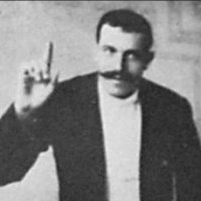- cross-posted to:
- [email protected]
- cross-posted to:
- [email protected]
AT&T Long Lines “Oak Hill” Tower, San Jose, CA, 2021.
A monopoly of pixels at https://www.flickr.com/photos/mattblaze/51261791084
#photography
Captured with the Rodenstock 50mm/4.0 HR Digaron-W lens (@ f/4.5) on a Cambo WRS-1600 camera (with about 15mm of vertical shift to preserve the geometry), the Phase One IQ4-150 back (@ ISO 50) in dual exposure mode (which preserves a couple stops of additional dynamic range into the shadows).
The tower’s shape is irregular; it tapers slightly.
The wide angle and panoramic orientation give a bit of context, alone on a hill (which is being rapidly encroached by adjacent residential development).
For much of the 20th century, the backbone of the AT&T “Long Lines” long distance telephone network consisted primarily of terrestrial microwave links (rather than copper or fiber cables). Towers with distinctive KS-15676 “horn” antennas could be seen on hilltops and atop switching center buildings across the US; they were simply part of the American landscape.
Most of the relay towers were simple steel structures. This brutalist concrete platform in San Jose was, I believe, of a unique design.
The San Jose Oak Hill Tower is unique in a number of ways. The concrete brutalist design appears not to have been replicated anywhere else; it seems to have been site-specific. It sits atop an underground switching center (that was partly used for a military contract), which explains the relatively hardened design.
Today the underground switch is still there, owned by AT&T, but the tower space is leased to land mobile and cellular providers. The old horn antennas at top are disconnected.
With a few exceptions (mostly towers atop downtown switching offices in populated areas), no one was trying to make any of this utilitarian communications infrastructure beautiful. It was form strictly following function, built to be reliable and rugged.
But there was, I think, quite a bit of beauty to find in it. I wonder if we’ll look at our current neighborhood cellular towers, now often regarded as a visual blight, the same way decades after they’re (inevitably) also gone.
I’m pretty sure we will
The brownstones of Brooklyn – over which these days Wall Street guys frantically try to outbid one another with $3-$4 million offers – because they’re regarded as gorgeous and iconic …
… were, when they were first built in the 19th century, utterly loathed by veddy propah citizens as being hideously ugly eyesores
While recognizing that horrible contemporary design does indeed exist, I have trouble fully trusting here-and-now aesthetic judgements
@[email protected] I find cell towers disguised as trees particularly amusing.
@[email protected] I’ve seen similar concrete microwave towers in the upper Midwest but they were uncommon enough to stand out. The design was probably a Bell System standard for some obscure use cases. That said, it’s a nice image.
@[email protected] As kids in the 70s, we (at least the we that I ran with) thought this was where the 911 operators were. No kidding. We called it the 911 tower.
@[email protected] You weren’t that far off - the public safety tower is on the same hill.
@[email protected] Huh!
“In today’s chapter of ‘TIL’…”




